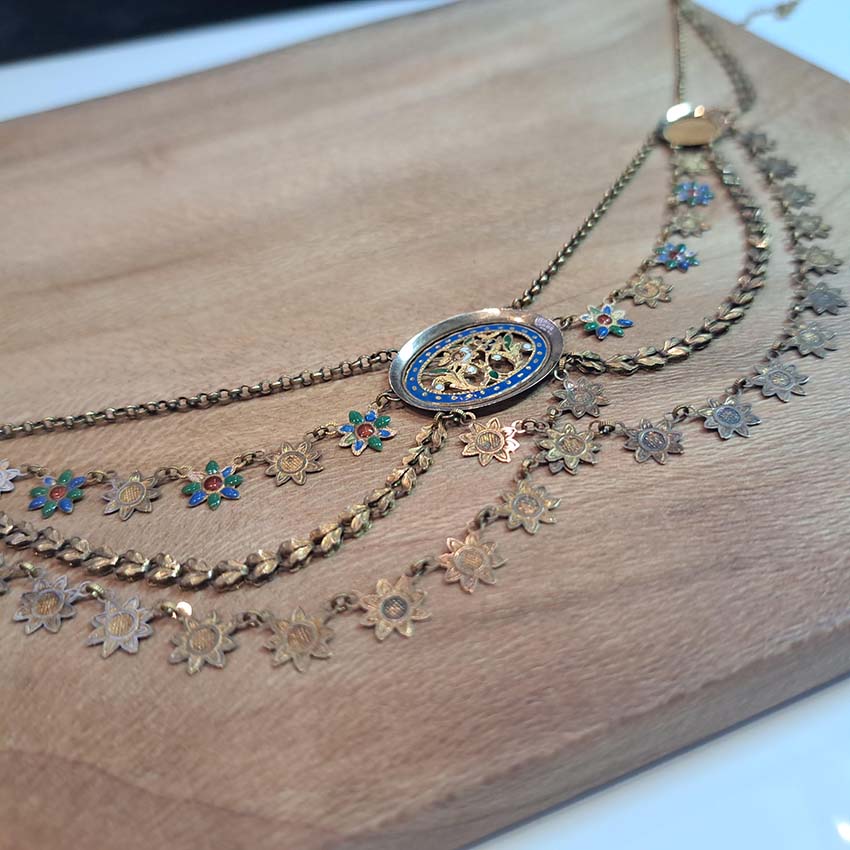Antique Georgian French Enamelled Gold Collar Necklace
Antique Georgian French Enamelled Gold Collar Necklace
SKU: SKU: JDAD-15128-0176
Antique Georgian French Enamelled Gold Collar Necklace
Condition: excellent condition
Country of origin: France
Period: ca. 1810
Material: 18ct bi-colour (yellow and red) gold
The type of enamelling is typical for the city Bresse in France, hence the name Bresse Enamel.
Extra information: Collier d'esclavage- Esclavage is French and literally it means slavery. We'll leave it to your imagination to give an interpretation to this naming. It is a type of necklace composed of three or more chains or strings of beads or jewels in which the chains or strings hang approximately equidistant from each other. They were worn in Normandy as peasant jewellery in the mid-18th century. Such jewels were in many regions of France the most beautiful jewel offered by the bridegroom to his bride the day of their wedding. The definition of 'collier esclavage' appears for the first time in the 'Dictionnaire de Trévoux' in 1752. This necklace knows a very large geographical diffusion. In Normandy, the gold pieces were often engraved. A collier d'esclave is an extremely rare article to find and we are proud to be able to offer one here.
Hallmarks: The French hallmark depicting a rooster's head which was used in France for 18ct gold around 1810.
Dimensions: length 51.00 cm (20,08 inch) cm
Weight: 13.90 gram (8,94 dwt)
Couldn't load pickup availability
Authenticated & Guaranteed
Every piece is checked and authenticated
- Free UK Delivery
- Ring Re-sizing Available.
- Rated 5 stars by our customers on Google Reviews
Details
Details
Delivery
Delivery
All orders are shipped via a secure delivery provider, and are securely padded in transit, with full tracking and insurance for your peace of mind. Alternate couriers are available by special request.
UK Delivery - NEXT DAY and EU
EU Delivery - Two Working Days > EU
USA Delivery - 3-4 days
Returns
Returns
You can return your item for a full refund for any reason by simply getting in touch to let us know within 14 days of receiving it.
Please message us or call if you have any questions!
FAQs
FAQs











FREE UK DELIVERY
On all orders. UK mainland only
AUTHENTICATED & GUARANTEED
Every piece is checked and authenticated
SUSTAINABLE LUXURY
Beautiful jewellery, no new mining or waste.
UNIQUE ONE-OF-A-KIND PIECES
Each is a rare find with its own story












